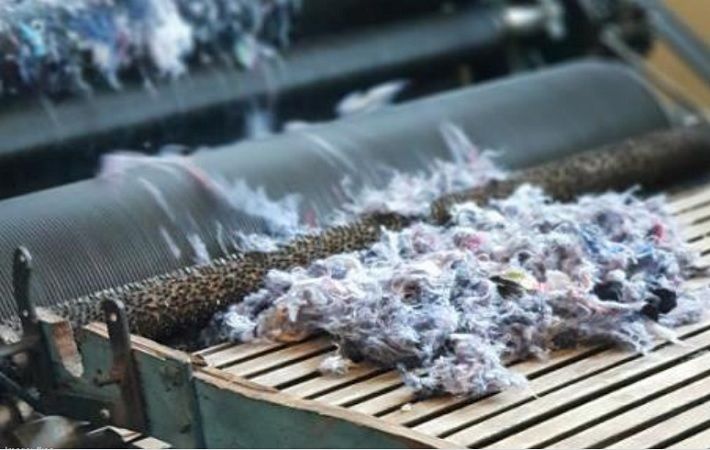Interviews
Impossible to find pre-consumer textile waste amount in Canada: survey
16 Jun '21
3 min read

Pic: Fashion Takes Action / IKEA
Though it would be beneficial for Canada to start textile recycling with textile sector waste, a recent survey by Fashion Takes Action (FTA) found it is impossible to determine the amount of pre-consumer textile waste as companies either do not track it, or it is too complicated for them to access this information. FTA aims at advancing sustainability in fashion.
Still, survey results reflected an interest by manufacturers and retailers in the country to participate in a pilot programme for textile recycling.
Companies also produce post-consumer textile waste. However, there is no data in the country on how much textile waste each sector has as textiles are usually classified as ‘other’, and are not tracked as a standalone waste category. Thus, it is less likely that any survey will be able to gather this information, the report says.
The survey report, titled ‘Feasibility Study of Textile Recycling in Canada’, was commissioned by Environment and Climate Change Canada and aims to profile the feasibility and pre-feasibility of the domestic textile recycling industry.
Based on a study in Ontario, only 22 per cent of all textiles in the residential waste stream are available for recycling; the rest is good enough for reuse or so contaminated that it cannot be recycled. This situation is different in the industrial stream, where the survey estimated that all materials require recycling.
The survey estimates that 160,000 tonnes of textiles made from 100 per cent synthetic fibres and 200,000 tonnes from synthetic-natural fibre blends are in the Canadian waste stream and require recycling.
There is enough material to feed multiple textile recycling facilities in Canada if the material can first be separated from the waste stream, and if there are sufficient recycling opportunities available in he country. However, before any post-consumer textile can be recycled, the material must be sorted according to reuse or recycling, and if for recycling, for which process, the survey report says.
Although automated sorting technologies have been tried and tested on other waste streams, more work remains to be done to ensure their successful transfer to textile waste. The mechanical and chemical recycling sector is not yet consolidated, as various competing technologies are vying to demonstrate their viability, often on very specific feedstocks.
Considering feedstock, investment costs and technology readiness, the most promising technology to start a textile recycling industry in Canada is mechanical recycling. The best way to get this started is to conduct a pilot with a retailer or manufacturer. To make this pilot a success, not only the technology, but also potential end markets for the new products must be considered, the report adds.
Still, survey results reflected an interest by manufacturers and retailers in the country to participate in a pilot programme for textile recycling.
Companies also produce post-consumer textile waste. However, there is no data in the country on how much textile waste each sector has as textiles are usually classified as ‘other’, and are not tracked as a standalone waste category. Thus, it is less likely that any survey will be able to gather this information, the report says.
The survey report, titled ‘Feasibility Study of Textile Recycling in Canada’, was commissioned by Environment and Climate Change Canada and aims to profile the feasibility and pre-feasibility of the domestic textile recycling industry.
Based on a study in Ontario, only 22 per cent of all textiles in the residential waste stream are available for recycling; the rest is good enough for reuse or so contaminated that it cannot be recycled. This situation is different in the industrial stream, where the survey estimated that all materials require recycling.
The survey estimates that 160,000 tonnes of textiles made from 100 per cent synthetic fibres and 200,000 tonnes from synthetic-natural fibre blends are in the Canadian waste stream and require recycling.
There is enough material to feed multiple textile recycling facilities in Canada if the material can first be separated from the waste stream, and if there are sufficient recycling opportunities available in he country. However, before any post-consumer textile can be recycled, the material must be sorted according to reuse or recycling, and if for recycling, for which process, the survey report says.
Although automated sorting technologies have been tried and tested on other waste streams, more work remains to be done to ensure their successful transfer to textile waste. The mechanical and chemical recycling sector is not yet consolidated, as various competing technologies are vying to demonstrate their viability, often on very specific feedstocks.
Considering feedstock, investment costs and technology readiness, the most promising technology to start a textile recycling industry in Canada is mechanical recycling. The best way to get this started is to conduct a pilot with a retailer or manufacturer. To make this pilot a success, not only the technology, but also potential end markets for the new products must be considered, the report adds.
Fibre2Fashion News Desk (DS)
Popular News
Leave your Comments
Editor’s Pick
































-Ltd..jpg?tr=w-120,h-60,c-at_max,cm-pad_resize,bg-ffffff)





.jpg?tr=w-120,h-60,c-at_max,cm-pad_resize,bg-ffffff)
.jpg?tr=w-120,h-60,c-at_max,cm-pad_resize,bg-ffffff)






